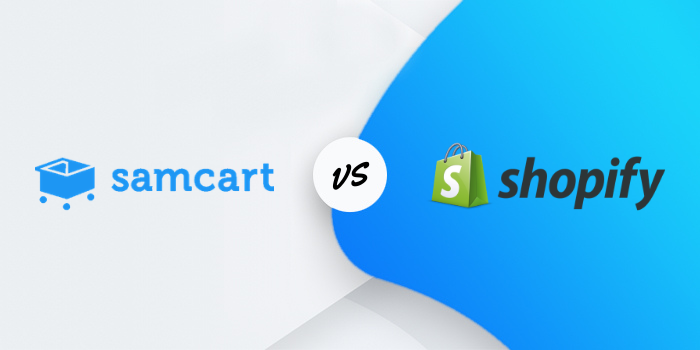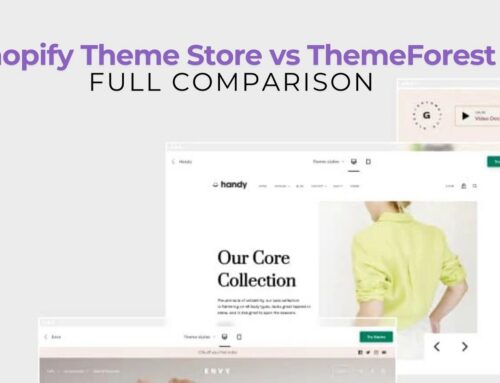When mentioning the most popular e-Commerce platforms in the world, Shopify might be one of the first names that come into your mind. However, have you ever wondered whether there are other alternatives to Shopify?
Of course, the answer is Yes, there is more than one platform that could be put in comparison with Shopify. In this article, we will show you the battle between two excellent e-Commerce builders – SamCart vs Shopify.
It is high time to check it out!
Contents
- 1 Samcart vs Shopify Overview
- 2 Key Differences of Samcart vs Shopify
- 3 Which is Better Samcart or Shopify?
Samcart vs Shopify Overview
Overview of Samcart
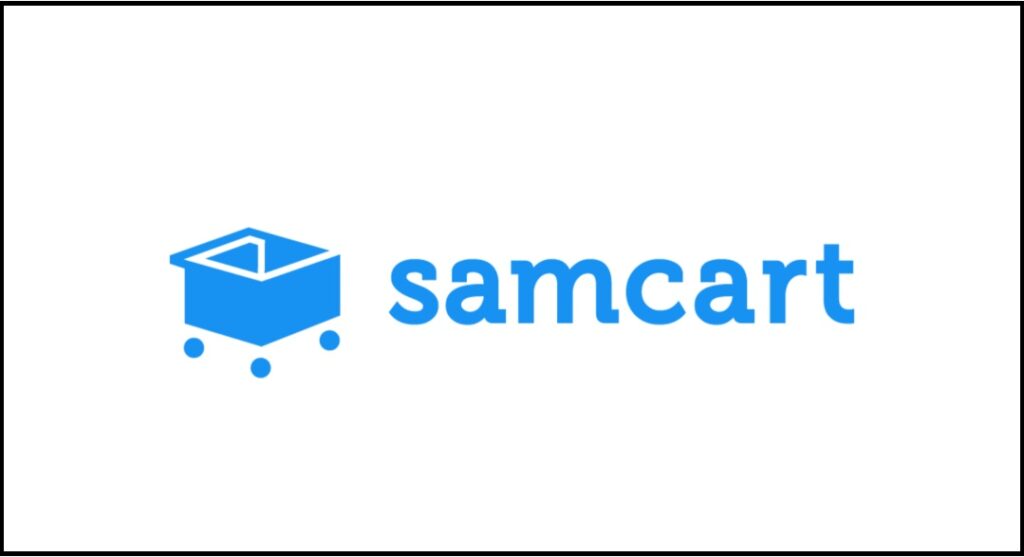
As the first e-Commerce platform for direct-to-consumer brands, SamCart was built in 2013 by Brian and Scott Moran. SamCart focuses on optimizing the checkout process with outstanding sales features: cross-selling bumps, one page checkout, A/B testing, subscription saver, and so on.
This platform aims to showcase your products, increase conversion rate, promote your page, and boost your Shopify sales. With a 2-tier affiliate program, drag and drop page builder, a library of beautiful pre-designed templates, 100% mobile responsive themes, as well as many other remarkable features, SamCart has been chosen as a trustworthy partner by more and more merchants in recent years.
With the slogan “Sell Your Product, Not Your Store”, SamCart had been in a great collaboration with more than 14,000 entrepreneurs. And perhaps you will be the next one?
Overview of Shopify
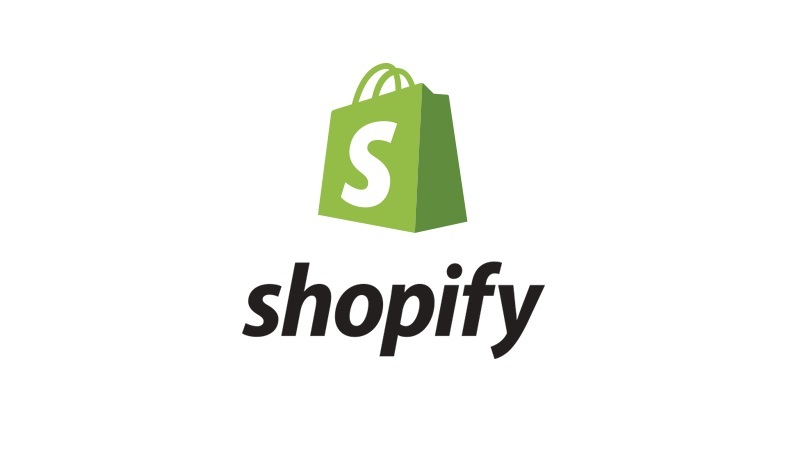
Shopify is not a strange name to e-Commerce merchants.
As a giant in this field, Shopify has a multinational e-commerce company headquartered in Ottawa, Ontario. In June 2006, Shopify officially launched and developed as a platform and has continuously improved its performance to become an all-in-one e-Commerce platform as of now.
Coming to Shopify, you will be offered a wide variety of powerful tools and services to build an online store from the ground up, such as sales, marketing, shipping, payment, etc.
Whether you are a tech-savvy person or not, everything will be a piece of cake when you opt for running a store on Shopify. Within a few minutes, you can create a website. And within a few days, you get ready to build and launch your store even if you haven’t known anything about Shopify before.
Shopify is an ideal choice for e-Commerce businesses because of its excellent advantages.
And now, let’s come to explore the world of these two platforms!
Key Differences of Samcart vs Shopify
Ease of Use
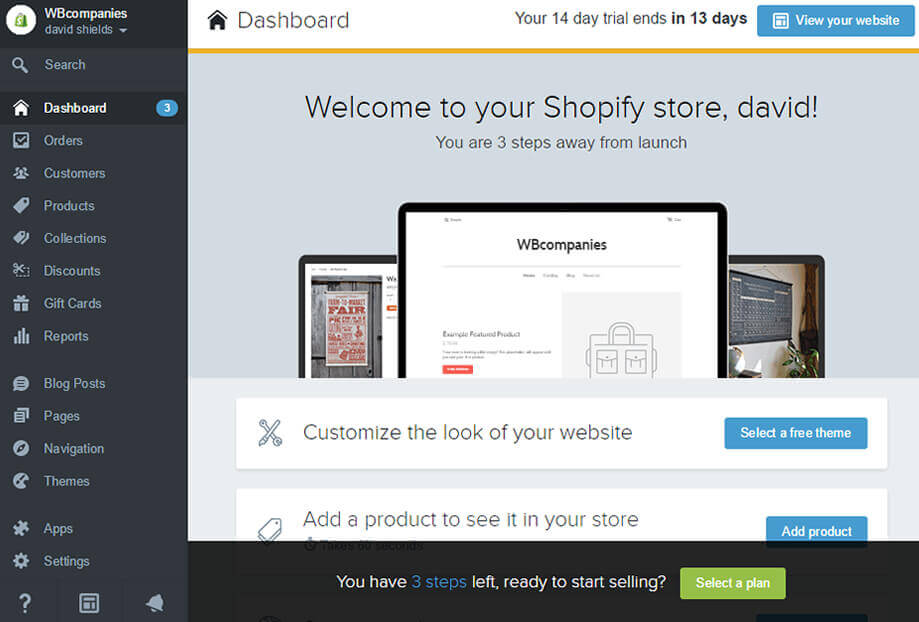
Honestly, the overall simplicity is one of the most remarkable features of SamCart.
Even when you know little about setting up websites, you can get started with SamCart within a few minutes. Instead of the boring checkout page of Paypal or other payment gateways, SamCart allows merchants to create a straight-to-use, intuitive and optimized checkout interface. You can easily find all the necessary tutorials and guides on the official SamCart website.
When put in comparison with its partner, Shopify also stands out as a user-friendly e-Commerce platform. You can get not only the official documents from Shopify but also millions of valuable tutorials under different formats (such as videos, infographics, blogging, etc.) from other experienced users on the internet.
As one of the most popular e-Commerce builders in the world, Shopify will make you overwhelmed with a wide variety of functions, which all are set in the Shopify admin panel reasonably.
Templates & Design of Samcart vs Shopify
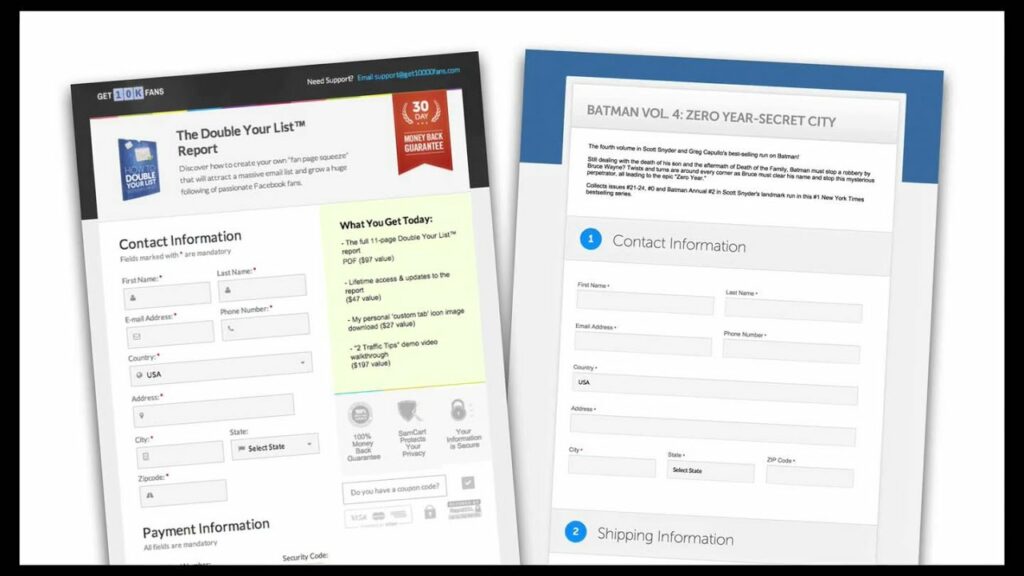
We have to say that the template library of SamCart is still in the early stages. They has three types of templates: pre-built, empty layout and popup templates.
All of them, which are expected to bring high converting checkout, are the result of endless efforts of the experienced and skilled marketing professionals in e-Commerce. They made a vigorous and determined attempt, tested again and again, spent lots of time gathering data and researching consumer insights. Thus basing on these analyses, they find out how to push traffic and conversions through the easy-to-use and effective templates in online sales.
It is the reason why I had fallen in love with SamCart’s wonderful template library.
Shopify also has its own themes store with over 150 free and premium themes. Just a short note: While SamCart focuses on designing checkout page templates, Shopify provides the same themes for all your website pages.
With a talented team of designers and developers, Shopify gets ready to bring the modern, eye-catching, and responsive themes to their customers. Besides its own hand-designed themes, this platform also encourages you to explore a treasure trove of themes from its third-party partners (in case the price is not a matter to you).
In terms of customization, Shopify is the winner in this battle. SamCart allows users to adjust the very basic features like fonts, size, the position of blocks, etc. With Shopify, you can tweak your website’s design at will with different editing options. In addition, you are free to create an absolutely new theme for your store with the help of a professional designer/developer.
However, keep in mind that all templates of SamCart are free, while most of the themes from Shopify require a cost.
Samcart vs Shopify’ Add-ons Integration

In this round, Shopify still holds its edge.
With a wide array of more than 8000 compatible add-ons, the Shopify app store can be said to be one of your greatest assistants. From here, you can find out top Shopify integrations of every field: email, marketing, payment processors, analysis, SEO, etc. There are both free and paid apps for you to opt for.
It is easy and straightforward to embed these helpful tools into your online store. Shopify lets you extend your website with limitless capabilities and scale to build and develop a perfect one.
With SamCart, you can integrate with the basic tools including payment providers, email, marketing automation, membership, and page builders. As a one-page website builder, although SamCart doesn’t have an in-house available app store like Shopify with various add-ons, this platform has collaborated with Zapier, which enables merchants to instantly connect with 2,000+ apps to simplify your business.
And it is not a simple matter for both two platforms to add a customized plugin into your store without the support from a developer. However, today, there is a great number of outsourcing teams or companies, who are ready to help you all the time.
Sales Features
Come to sales features comparison between Samcart vs Shopify, we have many things to consider.
With the starting point as a simple application for sales funnels, SamCart has a go at improving its performance with numerous standout e-Commerce features. In addition to the basic functions, the most excellent ones we are bound to mention here are cross-selling bump, one-click upsells, one-page checkout, subscription saver, A/B testing, and so on.
Although Shopify doesn’t have several features like cross-selling, upsells, single-page checkout, subscription saver, etc. by default like SamCart, when coming to a perfect e-Commerce store, Shopify can beat its opponent with its comprehensive and effective core features. Shopify doesn’t focus on sales features as much as SamCart, but it still deserves one plus point for its outstanding functions. Below is an in-depth comparison of several remarkable features between the two platforms.
A/B split testing
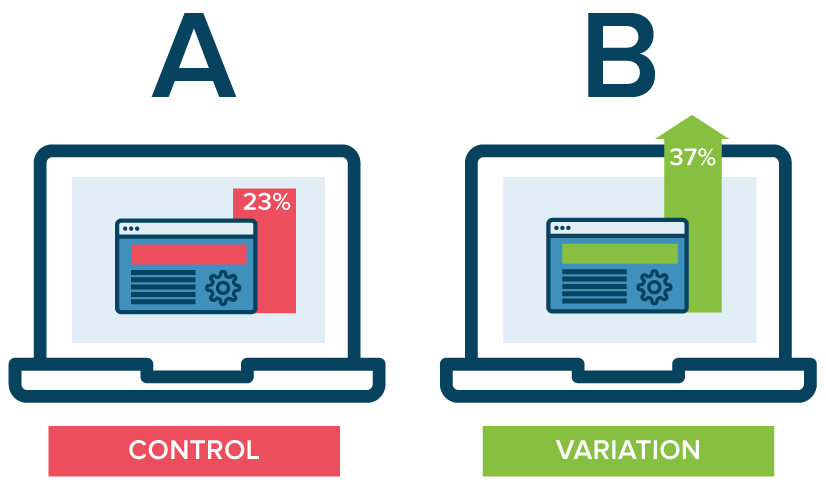
We all know that each platform has a powerful library with numerous templates or themes, and your question is “Which one is the most appropriate page for your store?”. However, it will be an extremely time-consuming and annoying process if you change your page continuously, collect data and analyze them manually. In this situation, you can give a try to A/B split testing tool of SamCart.
It will help you compare the conversion potential of different versions of your checkout page by monitoring and analyzing your consumers’ behaviors to each version. What you need to do is distribute all of them in one link to your targeted customers.
Although Shopify doesn’t have A/B testing on its default version, you can set up this feature through third-party tools like Google Optimize, Optimizely, and VWO. (Of course, you need to pay an extra money to have the perfect experience with these tools.)
One-click Upsells
One-click upsells really tickle my fancy with the way it maximizes my profits. After my customers check out the first items, my store will introduce them to a series of related items. They need only one click to add these products to cart and finish the payment process without filling in additional information.
For example, my customer bought a necklace and then she was presented with a beautiful dress that fits with her new necklace perfectly. Let’s guess, whether she will buy that dress or not? Yes, definitely. And there are different ways to apply one-click upsells to your business.
While one-click upsells is one remarkable feature of SamCart, the only way for Shopify users to set up this one is to find an integration from the app store.
Product management of Samcart vs Shopify

It can be said that the product management system of Shopify is more complex and comprehensive than that of SamCart. You can add unlimited products into your online store, with both digital and physical ones. You can easily track and manage them as well as numerous attributes like quantity, status, size, etc.
Inventory Management
With the inventory management feature, a store owner will know exactly about the number of a specific item. You can track whether that product is out of stock or not and have a suitable good-received plan.
When compare the inventory management of Samcart vs Shopify, we need to know that Shopify allows you to set up, view, and adjust everything in the Inventory area of Shopify. And, SamCart lacks this essential feature, that we hope that this platform will improve in the future.
Check out Best Shopify Inventory Management Apps: Comparison And Guide
Payment Process
Now, SamCart is in close cooperation with only 4 payment providers, including Paypal, Stripe, Authorize.Net, and Braintree. Although these gateways can be considered as the most popular ones in the world, SamCart is suggested to collaborate with more payment partners.
With a single-page checkout, SamCart makes all customers satisfied when they don’t need to redirect to another website to finish the payment process. Everything will be completed through a popup.
Unlike SamCart, Shopify has worked in collaboration with more than 100 payment gateways, including the most common ones like Paypal, Authorize.Net, Stripe, 2checkout, Google Pay, and so on. In addition, Shopify has its in-built payment gateway called Shopify Payment.
However, by default, without the one page checkout feature, customers of Shopify have to redirect to another web for payment.
Shipping
SamCart is successful in providing an automatic shipping process. You can set different shipping charges depending on different geographical locations, and SamCart will be self-regulating to apply a suitable amount of shipping money to each order. Also, you can opt for a standard flat rate or create your own “free plus shipping” products.
In terms of shipping, Shopify also does a great job. They keep a favorable fulfillment rate by letting everything be solved automatically.
Performance of Samcart vs Shopify

As an effective solution to maximize your total revenue, SamCart is not the winner in the sense of performance, particularly Search Engine Optimization and blogging features.
Also, it is very essential to rank your sales page up higher in Google. Hence, developers of SamCart bring Product SEO Settings with the basic SEO factors like title, description, and featured images. But sadly, that’s all. If you want to optimize SEO factors in your SamCart store, you should consider a third-party integration. In addition, SamCart has no blogging features.
Whereas, Shopify is the better choice when this platform supports SEO best practices. Along with Google Analytics, Shopify also provides robust tools like page title, descriptions, sitemap.xml, alt text, and even 301 redirects. Although Shopify has only very basic blogging features, you can solve this problem (if you are planning to build a content-oriented website) with flocks of integrations on the Shopify app store.
Customer Support

When reviewing customer support of these two platforms, I realized that Shopify is slightly better than SamCart.
It cannot be denied that SamCart has an active and dedicated customer support team through live chat, phone, and email. All your doubts and problems will be responded to in a timely manner. However, the SamCart team gets ready to support you in only business hours.
In contrast, Shopify offers 24/7 customer support service. Via live chat, phone, and email, you will receive their great help when you encounter any practical problem.
Samcart vs Shopify Pricing & Transaction fees

Samcart offers 3 pricing plans:
- SamCart Launch plan: $79 per month
- SamCart Grow plan: $159 per month
- SamCart Enterprise: Flexible
Is there any type of transaction fees with SamCart? No. Regardless of which payment provider you choose, you will not lose transaction fees.

When in comparison with Shopify pricing plans, the two basic and medium plans of Shopify are cheaper than that of SamCart. Let’s see.
- Basic Shopify: $25 / monthly
- Shopify: $65 / monthly
- Advanced Shopify: $399 / monthly
If you choose an annual or biennial plan to enjoy a 10% discount or 20% discount respectively.
However, Shopify transaction fees require users to pay a great amount of money if they don’t use Shopify Payment. You will lose 0.5% to 2% for each sale as transaction fees.
Which is Better Samcart or Shopify?
Let’s take a quick glance at this summary.
| Pros | Cons | |
| Shopify | – Easy to use – A powerful Shopify app store with numerous integrations – Comprehensive and effective core functions – Robust SEO tools – 24/7 customer support – Customized themes and web design – A wide variety of payment providers – Different pricing plans for each type of users – Dedicated community |
– Transaction fees for other payment gateways – Costly add-ons – Lack of single-page checkout, one-click upsells, etc. by default – Scalability for large businesses is not optimal – Basic blogging features |
| SamCart | – User-friendly platform – Excellent sales funnel features such as one-click upsells, A/B split testing, cross-selling bump, and so on. – Free templates – In collaboration with Zapier in the sense of integrations – Single-page checkout – An in-built Dunning System – Different payment models, including subscriptions, one-time payment, trials, and payment plans |
– Lack of basic e-Commerce features like Catalog Management, Inventory Control, etc. – No in-built digital sales tax calculation – Lack of partners in every field: payment providers, marketing, etc. – Lack of SEO tools – No blogging features – Customer support service is available only in business hours |
It is time to answer the question, “Samcart vs Shopify, which one is better?” and “Who should choose SamCart / Shopify?”
As we mentioned many times in this article, the main aim of SamCart is to help you achieve aggressive revenue goals. If it is also your starting point, SamCart will be your right hand! In my opinion, some groups that should experience this platform one time are small businesses, non-profit organizations, Amazon sellers, course creators, product inventors, authors, etc.
As an all-rounder e-Commerce platform, Shopify meets the requirements of all businesses at every scale. If you get ready to have long horizontal moves during your career path in selling online, we highly recommend Shopify as the better choice. Although this platform still has several disadvantages, it deserves at least a try. Perhaps, Shopify will be your ideal companion.
Two platforms Shopify and SamCart both allow you to try them free. You should take advantage of this two-week period to experience the strengths and drawbacks of each platform, which will help you make the right decision.
If you still have any questions, feel free to contact us. BSS Commerce Shopify team is willing to support you all the time!
Keep reading: Shopify vs Paypal: An In-depth Comparison of Two Payment Methods

